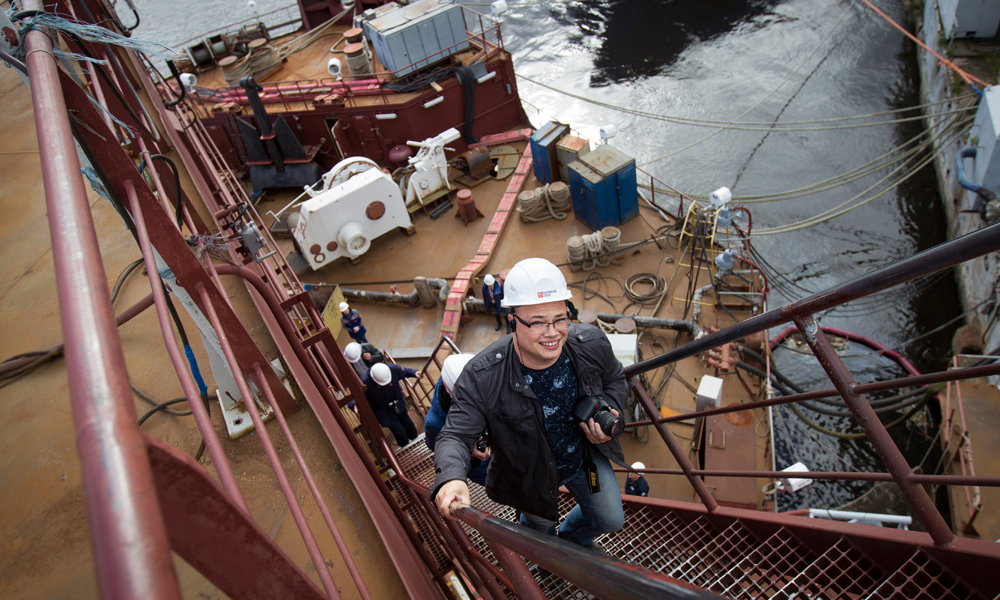
Power Unit Preparing for Voyage
back to contentsDock trials, which involve equipment testing, are now in full swing. Simultaneously, the station is being fitted out with engineering systems. “Our main task is to prepare the vessel for nuclear fuel loading by 31 December. We have to work double shifts to meet the schedule. The plans are to load fuel in the first quarter of the next year,” says chief constructor Alexander Kovalyov. The Baltic Shipyard must transfer the floating power station to the customer (RosEnergoAtom) by the end of 2017. FNPS will replace the obsolete Bilibino nuclear power plant and Chaun thermal power station already in 2019. The floating facility can be utilized for generating both electric and thermal power, as well as for water desalination.
Another important phase of the FNPS project is the construction of onshore structures in Pevek (Chukotka, Russia), where the station will be based. “We will drive the first pile on the construction site on 4 October. This tradition in underwater construction is equivalent to smashing a bottle on a new vessel at the float-out ceremony,” says Sergei Zavyalov, RosEnergoAtom’s Director for FNPS. “The pier for the floating power station will be a grand hydraulic structure stretching for 600 meters and forming a closed water area. The heat and electric power will be transmitted onshore through a connection to wiring and piping lines on the pier.”
Meanwhile, Pevek is receiving whatever is needed for the construction. A few days ago, a ship convoy arrived at the local sea port and delivered a consignment of materials and equipment for the floating station. One more consignment is being loaded on vessels. “We have taken on a difficult task of delivering all the construction materials for this giant facility within two or three months when the 2016 navigation is possible,” Sergei Zavyalov summarized.
The construction of FNPS onshore structures will cost 7.2 billion rubles, with 21.5 billion rubles invested in the floating power station.
The floating power station has a great export potential, but it should first demonstrate good performance. “We understand that new technology gains trust only if proved reliable. If it demonstrates sustainability in operation and positive performance, then the market responds,” Zavyalov says. According to his estimates, FNPS could be interesting for Indonesia, Malaysia, Thailand, UAE, Saudi Arabia, Bahrain and Qatar. The sooner this new technology is demonstrated at work, the earlier commercial orders flow in.




